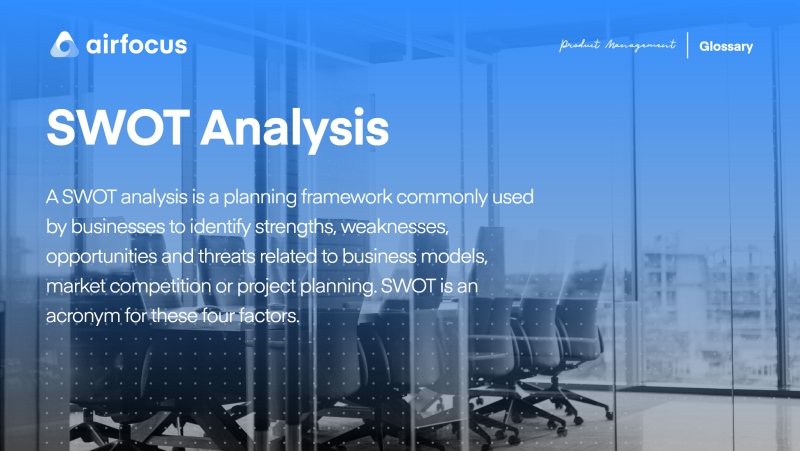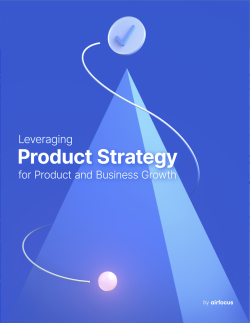SWOT Analysis
What is a SWOT analysis?
Definition of a SWOT Analysis
A SWOT analysis is a planning framework commonly used by businesses to identify strengths, weaknesses, opportunities, and threats related to business models, market competition, or project planning. SWOT is an acronym for these four factors.
Strengths and weaknesses are internal to your company — things that you have some control over and can change. This could include who is on your team, your key resources, amount of capital, and intellectual property.
Opportunities and threats are the things external to your company — the movers, shakers, and market changes occurring within your sector. You can take advantage of opportunities and protect against threats, but you have little control over them. Examples include competitors, prices of raw materials, and customer shopping trends.
How does a SWOT analysis work?
The nature of the SWOT analysis will vary between companies and industries, however, there are a set of basic steps involved.
1. Identify the objective
Before you put pen to paper, you need to be crystal clear on what you’re hoping to achieve with your SWOT analysis.
You might want to explore the potential of a new product, better understand changes in the existing market, or assess the value of an entirely new one. No matter the purpose, you need to have a clear goal in mind and know how you’ll use the SWOT findings to achieve it.
2. Assemble your team
While executive insight is always important, it’s also crucial to involve different points of view so that all perspectives are covered.
Depending on your goal, you may want to invite contributions from line managers across the organization, including sales, HR, and production. For one, this will help you build robust and collective knowledge. But it also encourages increased employee engagement — and if you’re starting off on a brave new mission, you’ll need that in spades!
3. Build your SWOT matrix and fill it in
SWOT analysis plots the strengths, weaknesses, opportunities, and threats in an organized list, usually presented in a simple two-by-two grid.
Your team can now begin brainstorming, debating, and discussing their thoughts on the proposed project in relation to each of the four categories. These can be fact or opinion, but each point should be clear and concise to make the review process as seamless as possible.
If you are inviting opinion, be clear to highlight things you know (i.e. fact) from things you think you know (i.e. opinion) — a simple change in pen color will do the trick. While gut feeling can sometimes turn out to be right, you’ll want to differentiate the two should you revisit your analysis in the future.
And on that point, SWOTs are most successful when used honestly. When considering weaknesses, welcome your own deficiencies — don’t simply list suboptimal product features, for example, but state their weaknesses too. A feature audit could help with this.
4. Review and plan
This exercise is about producing a strategy that you can work on in the coming months, so you need to translate your SWOT findings into actionable goals.
First, consider your strengths and figure out how you can use them to take advantage of your opportunities. Next, think about how those opportunities could help you combat your weaknesses, and how your strengths can overcome threats in the market.
The big question is whether or not the potential strengths and opportunities are likely to outweigh the weaknesses and threats. If not, it may be worth going back to the drawing board and coming up with a more manageable project. If yes, you can get to work.
What do you want to achieve in each calendar month moving forward? By what date do you want to complete these tasks? What’s your plan B?
Example of a SWOT analysis
To help get a better sense of what a SWOT analysis is, let’s consider "FireFitness" (a fictional business). They are planning to launch a new mobile application that has over 200 workouts, personalized meal plans, and interactive videos with professional PTs.
Their SWOT Analysis might look like this:
Strengths
Relevant: due to the coronavirus pandemic, home fitness has rocketed in popularity
Management: their team embraces hard-work and discipline
Weaknesses
Lack of capital: all startup funds will come from loans
Lack of reputation: they are not yet known in the virtual fitness market
Opportunities
Market: the mobile app economy is predicted to reach $188.9 billion by the end of 2020
Profitability: since 2016, there has been a 75% growth in in-app purchases
Threats
Saturated market: more fitness apps are emerging
Loyalty: acquisition costs could be high
So, what do you think? Is the project a go-er?
While this example is a little too thin on the ground (you want at least 5 bullets in each category), it shows the basis of a successful SWOT analysis and how it can be used to quickly assess the feasibility of a new idea.
What can a SWOT analysis do for your business?
But why do all this work? What can it bring to your business?
You might think you know everything you need to succeed, but a SWOT analysis will force you to take a more critical angle.
Considering all the limitations will provide the clarity needed to grow and diversify, and leave no stone unturned when tackling a new project.
Although SWOTs require a lot of subjectivity, when used collectively, they can bind teams together and instill a solid work ethic. This is crucial when it comes to actioning goals as each department will feel involved in the process and buy into it, boosting productivity across the board.
In a fast-paced market, it is imperative to keep abreast of any developments and exploit new opportunities before competitors do. The information generated through a SWOT can be used to monitor the market and highlight new openings, meaning you can get — and stay — ahead.

General FAQ

Glossary categories
Create effective product strategy

Experience the new way of doing product management








